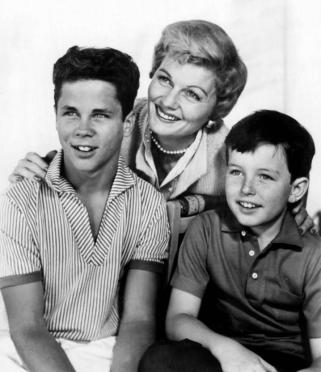
Photo Credit: Book cover for The Feminine Mystique, 1984, Del/Laurel reissue edition: VCU CNS/Flickr/CC BY NC 2.0
“We don’t need feminism anymore.”
How many times have I heard that one? And usually by twenty-something young ladies who, bless them, have never experienced the kind of oppression older women have and whose mothers have never experienced it.
I shouldn’t say “never” really because all women (regardless of age, ethnicity, gender identity, etc) have experienced some kind of oppression. A writer friend recently posted a meme to Facebook on all the things women couldn’t do in the first half of the 20th century, including serving on a jury and own a credit card. When we look at history, that list of what women couldn’t achieve grows exponentially. Think how 19th-century women couldn’t even own property that was left to them. Henry James’ novella Washington Square is all about a young lady (considered “plain” and not very socially inept) who is wooed by a handsome, charming young man who wants to marry her — you guessed it — for her money. Her father threatens to leave his money to worthy charities. Notice he doesn’t say “I’ll leave the money to my daughter and only to my daughter.” Why? Because even if he did, the money would revert to her husband’s control because she wouldn’t be allowed to own it (money is, or was in the 19th century, property).
Last year, when I published my post-World War II short story collection, Lessons From My Mother’s Life, I wrote this blog post about Betty Friedan’s seminal work The Feminine Mystique. I had read snippets of the book in grad school but it was only after reading the entire book that it made a huge impression on me. Friedan’s feminine mystique (that fairytale woman who was born to be a mother, wife, caretaker — in other words, whose entire being was defined in her relationships to others and how she could serve those others) resonated with me because these women were my mother’s generation. I saw so much of my mother’s life in the feminine mystique (hence the title of my collection) and the frustration and rage and guilt she experienced as a woman (as opposed to her role as mother, wife, nurse, and caretaker). Now, at the age of seventy-eight, my mom still struggles with being the perfect wife and mother.
We might ask, is the younger generation right? Didn’t we put the feminine mystique to rest in the 1970s and 1980s during the second-wave feminist movement? Aren’t women doing more than ever now, no longer expected to devote all their lives to home and family if they don’t choose to? Aren’t women making great strides in all areas of life (politics, society, economics, etc.) and in all corners of the globe?
Perhaps herein lies the problem. There is no question we’re making strides everywhere and we are showing our strength in so many different ways. But we are also still expected to take on the feminine mystique and prioritize it above everything else. As Hanna Rosin points out in this article, if the goal of the women’s movement was to redefine women’s roles and women’s identity, we’ve really only added to them.
This is essential to understanding how the feminine mystique has surfaced during the COVID pandemic, more so than perhaps in the past few decades. This article talks about the social safety net (the place where family care happens) and how the pandemic has only increased the expectations for women (the article refers mostly to mothers, but I expand this to all women because we’ve been expected to be the caregivers to everyone, not just our kids) to create that place of shelter so many of us have needed during this time. Stay-at-home orders increased the burden on many women to create that safe space for children, husbands, parents, and others. Many women also lost their jobs during the pandemic, leaving the part of them that pursued financial stability and (hopefully) professional success empty.
We can’t quite say we’re in the same spot with the feminine mystique in the 2020s as we were in the 1950s. Many women discovered their creativity during the pandemic with the slew of creative courses and Zoom videos (paid and free) offered through social media groups and on the internet. As a writer, I saw a huge increase in writing-related online events (including “writing sprints” where people get together on Zoom and just write). These are quite different from the feminist consciousness-raising groups that saw many women through their frustrations and rage in the 1960s and 1970s but perhaps they are also more positive because women had the opportunity to strengthen their identities and get support for their artistic passions through these events.
I sincerely hope one day we will be able to say “we don’t need feminism anymore” and “the feminine mystique doesn’t exist”. But for now, I think it’s safe to say we still have far to go when it comes to opening up our hearts and souls to all that we can do as women and how we define ourselves as women and as human beings.
If you want to read stories about suburban women in the 1950s escaping the feminine mystique, read my book Lessons From My Mother’s Life here.
Come join me for a peek into the corners of history! Curious about those nooks and crannies you can’t find in the history books? Are you more a people lover than a date or event lover when it comes to history? Then you’ll love the Resilient History Newsletter! Plus, when you sign up, you’ll get a prequel to my Waxwood Series for free! Here’s where you can sign up.
How would you answer someone who told you, “The feminine mystique doesn’t exist in 2021?” Tell me in the comments!






